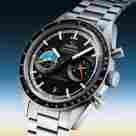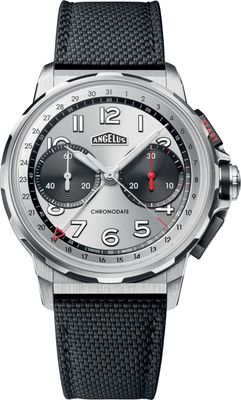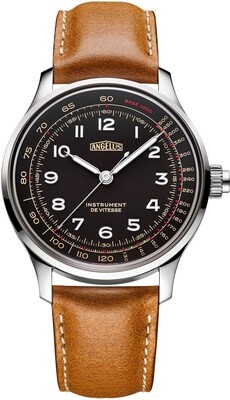In the 1960s, Angelus launched its “doctor’s watch”: a wrist-worn hand-wound chronograph with a unique dial. It presented a dual scale for reading the vital signs doctors need during patient examinations: a pulsometer – to measure the patient’s pulse – and an asthmometer – to record their respiratory rate. This rare piece, which follows the 1950s and 1960s trend of specialising chronographs to meet specific functional or professional requirements, has been brought up to date by Angelus to appeal to modern tastes.
In consultation with William Massena, founder of Massena LAB, Angelus is releasing a limited edition of 99 pieces of the Chronographe Médical x Massena LAB. The case is made from 316L steel, and its diameter has been increased to 39 mm to make the pulsometer scale more legible. The functions, and how they are presented on the dial, remain unrivalled. Not only has the combination of pulsometer and asthmometer remained unique, but its display is also one of a kind. First and foremost, the pulsometer has a very specific colour code: green, black, or red, corresponding to the severity of the reading obtained during the examination. By contrast, the respiratory scale is red and is nestled inside the minute circle. These two scales are positioned so as to make them as legible and clear as possible.
Inside the Chronographe Médical x Massena LAB, Angelus has incorporated a very specific version of its A5000 calibre. It displays the small seconds at 9 o’clock and only the chronograph seconds hand – the only one needed to use the medical scales. With no 30-minute counter, this calibre is dedicated to diagnosis. This version is presented with a single mushroom-shaped pusher at 2 o’clock. Operating at a rate of 3 Hz, it incorporates a column wheel and a horizontal clutch.








